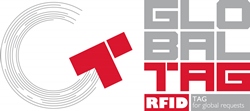The acronyms RFID means Radio Frequency Identification, that is identification through Radio Frequency.
The main difference between RFID active technology and RFID passive technology is the presence of a battery inside active transponders. This battery allows to increase the transmission power and consequently also the reading distance. Instead, passive technology, in order to propagate the electromagnetic field uses a condenser that, once load, generates the electromagnetic field which moves the information present in the chip.
The main operating frequencies are:
LF (125KHz e 134,2KHz) – Low Frequency
HF 13,56MHz – High Frequency
UHF 860-915MHz – Ultra High Frequency
UHF 2,4GHz (in the broadest sense of RFID, it falls into the category Wi-Fi and Bluetooth Low Energy, see specific section)
L’EPC “Gen2” is a standard that defines logical and physical requirements must have controller and transponder to work with UHF frequency in RFID. The version V2 was definitively introduced in 2013/2014 and compared to the version that even today is used in 99% of applications (EPC C1G2 V1), it adds some features that tags and controllers must necessary have, among which:
option that allows to hide a part of the memory, to reduce reading distance of the tag in a dynamic way and to limiting access privileges.
AUTHENTICATION AND ENCRYPTION in order to check the access to the data from the controller side and from the tag side.
MANAGEMENT OF THE USER MEMORY with new options.
For further information you can read the document drafted directly by the association GS1: http://www.gs1.org/sites/default/files/docs/epc/epc_gen2v2_fact_sheet.pdf



